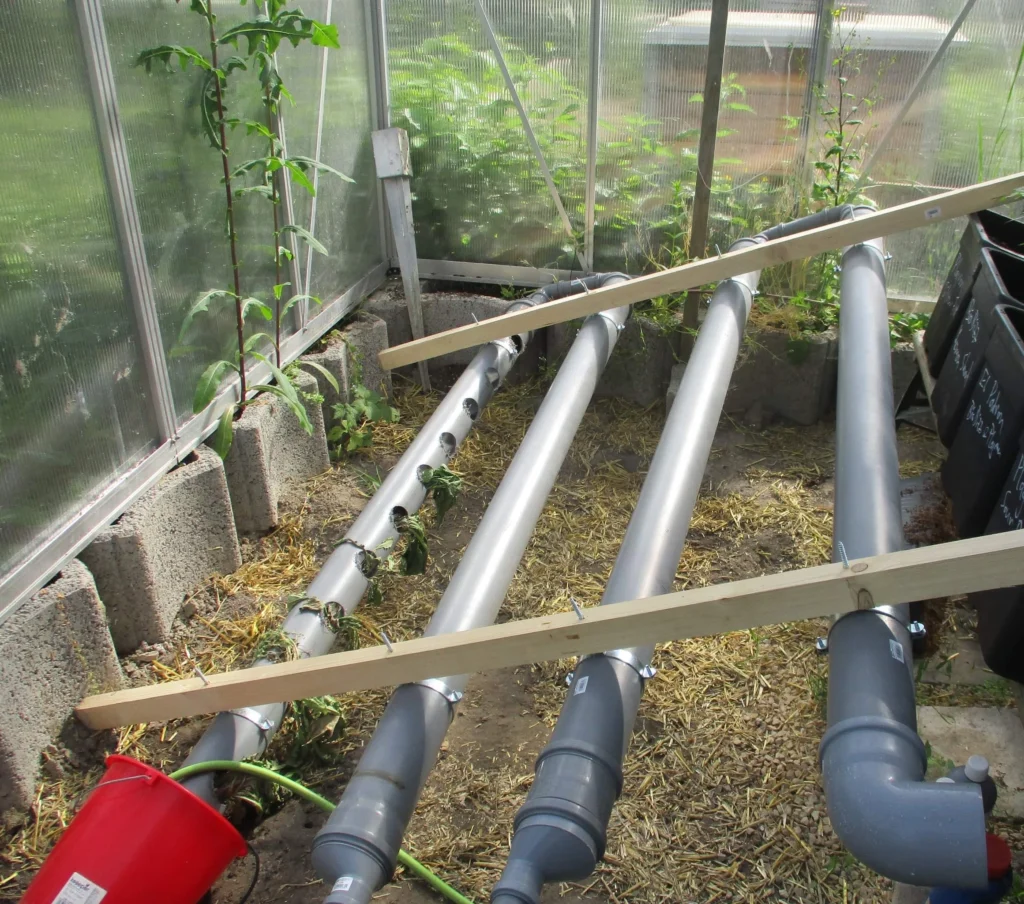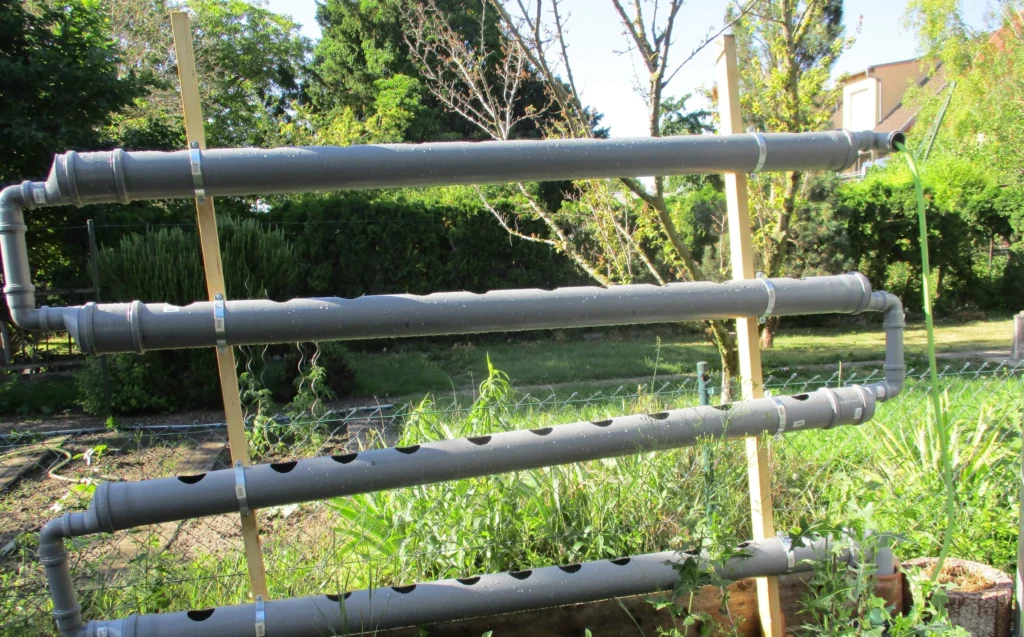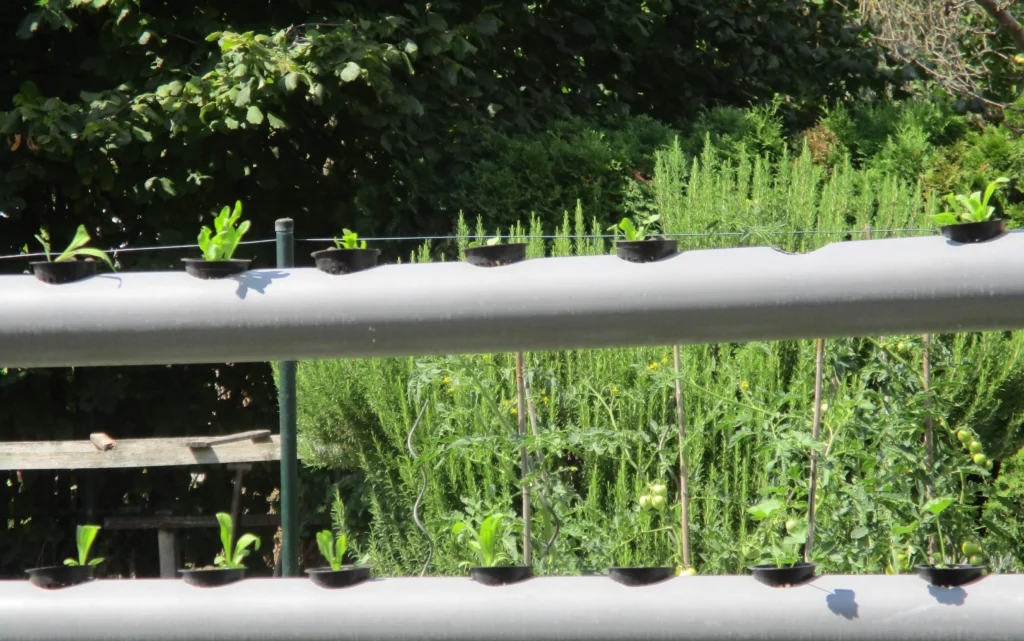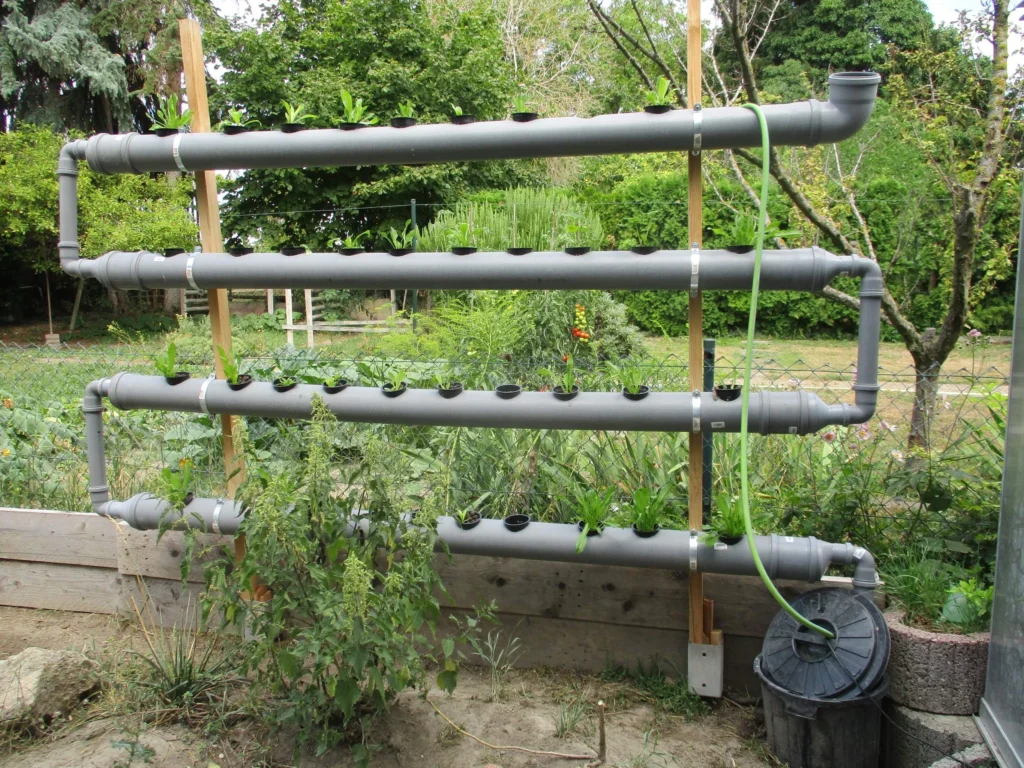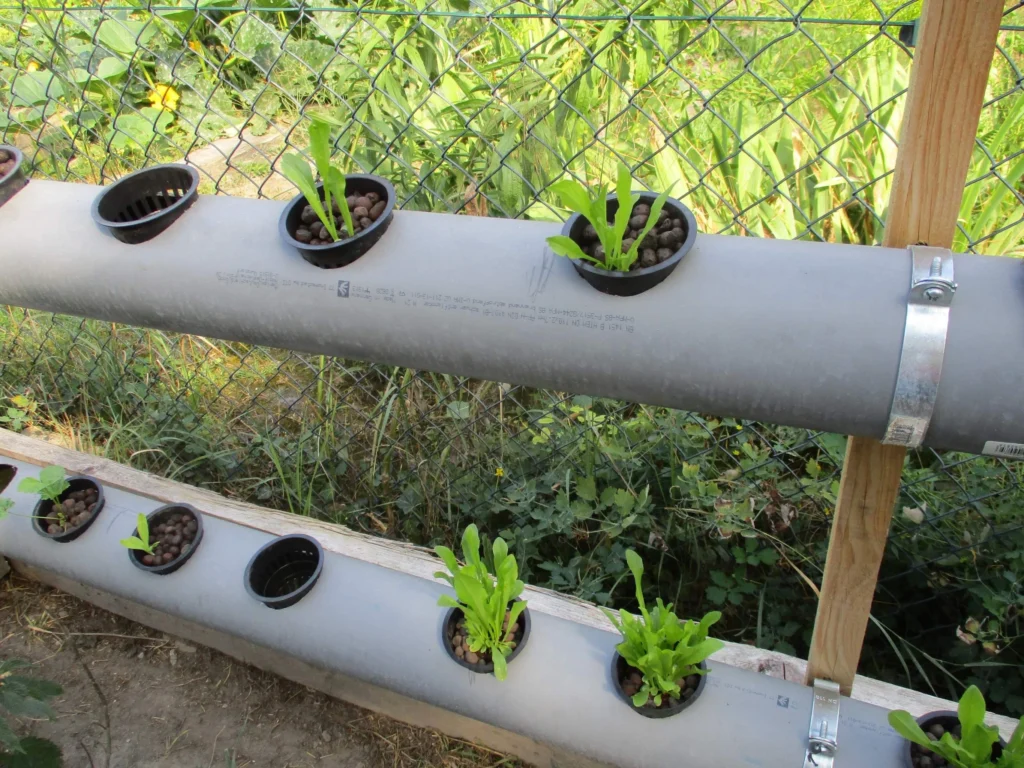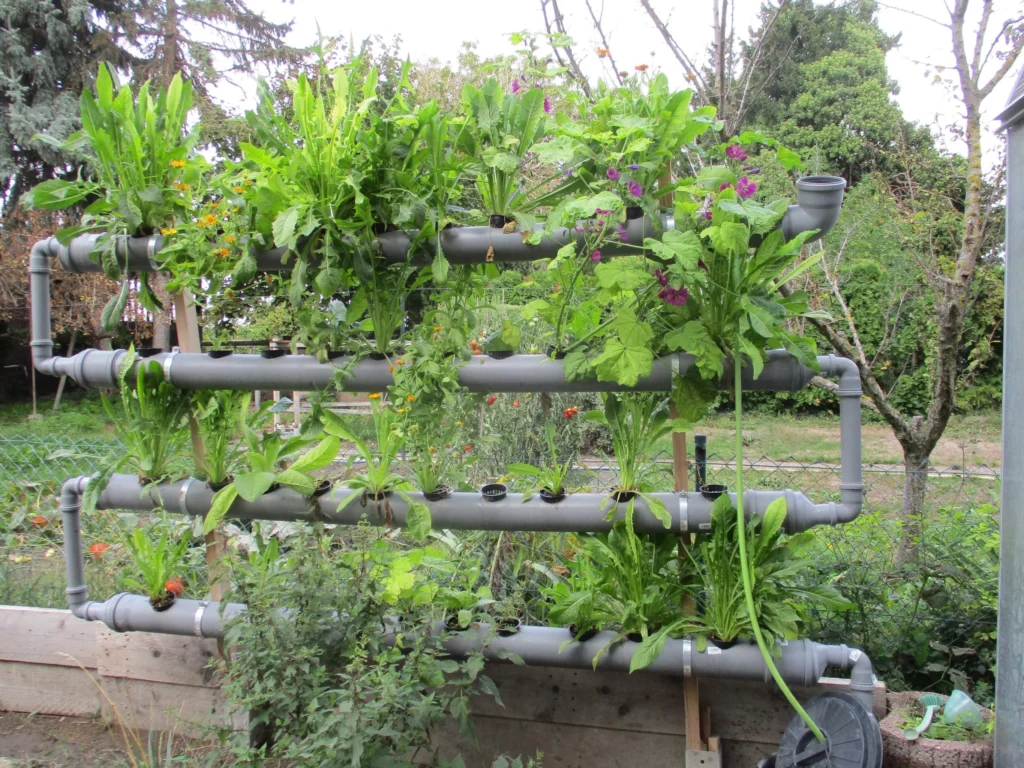Warmth and light
European tortoises originate from the Mediterranean region and are cold-blooded animals. They are dependent on us simulating the climatic conditions of their native habitat in our much cooler and more humid northern European climate. This does not mean that these animals should be kept in a terrarium, which they cannot tolerate at all. As species-appropriate husbandry without technology is not possible in our climate, the animals should be kept in a natural environment in the garden, albeit with a heated cold frame and outdoor enclosure.
This requires a high-quality cold frame made of 16 mm twin-wall sheets, preferably made of UV-permeable Plexiglas-Alltop© (e.g. Beckmann, Hoklartherm, GFP). There are cold frames that are supplied fully assembled and have an integrated hibernation pit with ‘predator protection’ (Soli Animalis).
A heater for the basic temperature and a warm, bright sun lamp are essential for species-appropriate keeping in the cold frame.
There must also be an outdoor enclosure so that the animals have plenty of room to roam, can graze on wild herbs and receive natural UV radiation. An adult animal should have at least 10 m2 of outdoor enclosure, although larger is always better.
For species-appropriate husbandry, we use climate tables of the original habitat, weather data and specialised literature (e.g. Kleintierverlag, Wegehaupt Verlag) as a guide.
The tortoises should be able to reach their preferred temperature of 38 degrees during the day throughout the entire active season. If this is not possible, the animals in this so-called ‘cold housing’ are at risk of the most serious painful illnesses and even death.
Safety advice
All technical equipment used around the cold frame (heaters, cables, sockets, control technology, etc.) should be suitable for permanent outdoor use or for use in the greenhouse and labelled accordingly. The recommendations listed here are based on many years of experience; any liability for damage resulting from their use is excluded. It is essential to protect the technical installations with a personal circuit breaker (‘RCD’) in the distribution board. A specialist should check the operational safety before commissioning the cold frame technology.
What equipment do you need as a hobby beginner?
The heater for the basic temperature
It is advisable to control all technology via time and temperature-controlled thermostats and to always monitor the temperatures using various thermometers at turtle height.
Splash-proof electric greenhouse heaters (e.g. Biogreen, Waldbeck) can be used in the cold frame without any problems and circulating air heaters (e.g. MacGreen, Elektrotherm) can also be used in the greenhouse. Many growers place a greenhouse heater in a corner of the cold frame on a dormitory to save space or hang it on a bracket. These devices quickly bring the cold frame and greenhouse up to temperature and, like all heaters, are controlled by thermostat sensors at turtle height.
Some keepers use greenhouse heating mats or heating cables in the lid of a roosting house (‘lid heating’). In this case, all animals must be secured in the heated sleeping house at night so that they are not exposed to inadequate temperatures.
Tubular greenhouse heaters (e.g. Royal Gardineer, Hunecke) are increasingly being used. These are installed out of reach of the animals, as they reach high temperatures on the surface.
Gas heaters (e.g. Dema, Biogreen) are occasionally used as an alternative and in the event of a power failure. In addition to protection against burns, sufficient fresh air supply should be ensured.
In the past, an Elstein radiator was often recommended for standard cold frames. This is a dark radiator that emits radiant heat, but no light, and reaches high temperatures on the surface. To protect against burns, it is operated in a heat-resistant lampshade with a protective grille and ceramic socket. Due to the risk of fire from flammable materials (leaves, straw, wood) in the radiation area and the associated safety concerns, these radiators are being used less and less frequently.
Control technology
When it comes to control devices, the selection of completely splash-proof devices is limited: only the ‘Biogreen Thermo 2’ universal thermostat is officially suitable for use in greenhouses. This is a universal thermostat that is easy to operate.
To extend the service life of its control units, they can be stored outside the cold frame in a cable box to protect them from moisture and heat. A regenerable dehumidifier cushion inside ensures that everything stays dry.
The basking spot for the preferred temperature
During the day, a bright, warm light source, also known as a ‘basking spot’, is required for the basking spot with a local temperature of 38 degrees at the carapace height of the largest animal. It is operated in a ceramic lamp holder.
A reflector screen focusses the radiation on the desired area and protects against water droplets. A protective grille at the bottom of the lampshade catches any shards. To protect the animals, the temperatures at carapace height should be checked regularly.
Many suitable bright and warm light sources for reptiles can be found in the terrarium supplies section. When choosing, you should pay attention to the size of the light source as well as the wattage. If you have several animals, choose a large light source with a wide beam angle (‘flood’). If you only have one animal in the cold frame, you can also use spotlights. If there are several adult animals, an additional basking spot may be required.
The basking spot can be controlled via a universal thermostat – in addition to the timer for the outdoor area – so that it does not burn unnecessarily on warm summer days. To do this, hang the temperature sensor in the shade at turtle height, out of reach of the animals.
As there is much less sunshine and light quality in central Europe than in the Mediterranean, the use of HID-UV-lamps is indicted. These lamps should be timed and not temperature controlled. The ballast should be housed in a cable box in order to safekeep it from heat and humidity. More information about UV
The automatic vent opener can save lives
At high temperatures, an automatic vent opener mechanically lifts the cold frame lid or the greenhouse window for ventilation and thus protects against overheating and heat stroke. This is why you should always use a window opener and, in strong sunlight, open the lids manually and shade the cold frame or greenhouse. Bast or reed mats that are slightly larger than the cold frame lids are suitable for cold frames. Special shading nets can be attached to greenhouses. There are also solar fans that provide additional air movement.
Microclimate
For a good microclimate and sufficient humidity in the cold frame, plant some Mediterranean hideaway plants, for example rosemary, lavender or sage. Keep the root area moist. If these plants thrive, the microclimate is usually also suitable for the tortoises.
Slatted curtain
To protect against heat loss and draughts in the transitional seasons and in cold weather in summer, it is advisable to use an overlapping louvre curtain made of soft PVC to prevent heat loss. The curtain is hung in front of the entrance area when the door is open.
Brumation in a pit or refrigerator
If you have a hibernation pit that is protected from frost and predators, the pit should be secured at a minimum temperature of 5 degrees Celsius after the animals have been gradually brought down for the winter. This is done using a heater controlled by a universal thermostat. Depending on the heat requirement, the options listed above for the basic temperature can be used as heating. In spring, the temperatures are gradually increased and the animals start the new season.
Alternatively, you can overwinter the tortoises in boxes with soil and leaves in a refrigerator that has been set to 5-6 degrees Celsius, and secured with a thermostat as an emergency stop undr 4 degrees Celsius..
After being shut down and rested, the animals should have already been staring firmly in the cold frame before they are moved into their boxes in the prepared fridge. The fridge is aired briefly every few days and the substrate moisture is checked. The animals are then occasionally checked and weighed. At the end of the rigour period, the tortoises are put back into the cold frame for wintering. There, the temperatures are gradually raised and the new season begins.
Thermometer
Reliable temperature monitoring using thermometers with temperature alarms is important throughout the turtle year, during the season and also during winter torpor.
Radio thermometers with temperature alarms provide local warnings within a range of around 30 metres. Smart thermometers, for example from ‘Mobile Alerts’ or ‘WeatherHub’, send an alarm to your mobile phone if the temperature deviates from the set range. The sensors transmit the measured values to a gateway, which then feeds the data into the internet.
If neither of the two methods is suitable because radio or Wi-Fi do not reach far enough, a GSM temperature monitor can be used. This method is also very suitable as an additional safeguard for cold frames and refrigerators, as it also provides information in the event of a power failure.
Probe thermometers monitor the temperature in the substrate, which is particularly important for overwintering and in the transitional periods. When overwintering in a refrigerator, for example, the temperature is measured in the substrate at the back of the rigid boxes under the leaves.
An infrared thermometer enables non-contact measurement of the substrate temperature and measurement of the temperature at carapace height under the sun lamp.
Good temperature management is very important for the health of our animals.
Spare technology
For safety reasons, all important components such as heating, light bulbs in various wattages, lamp sockets, cables, thermometers and thermostats should be kept in reserve. Unfortunately, defects usually occur on public holidays or Sundays, and occasionally the heating power is not sufficient.
Live chats with advice
on species-appropriate keeping of European tortoises with technology and controlled fridge hibernation can be found in the following Facebook group:
www.facebook.com/groups/starregruppe
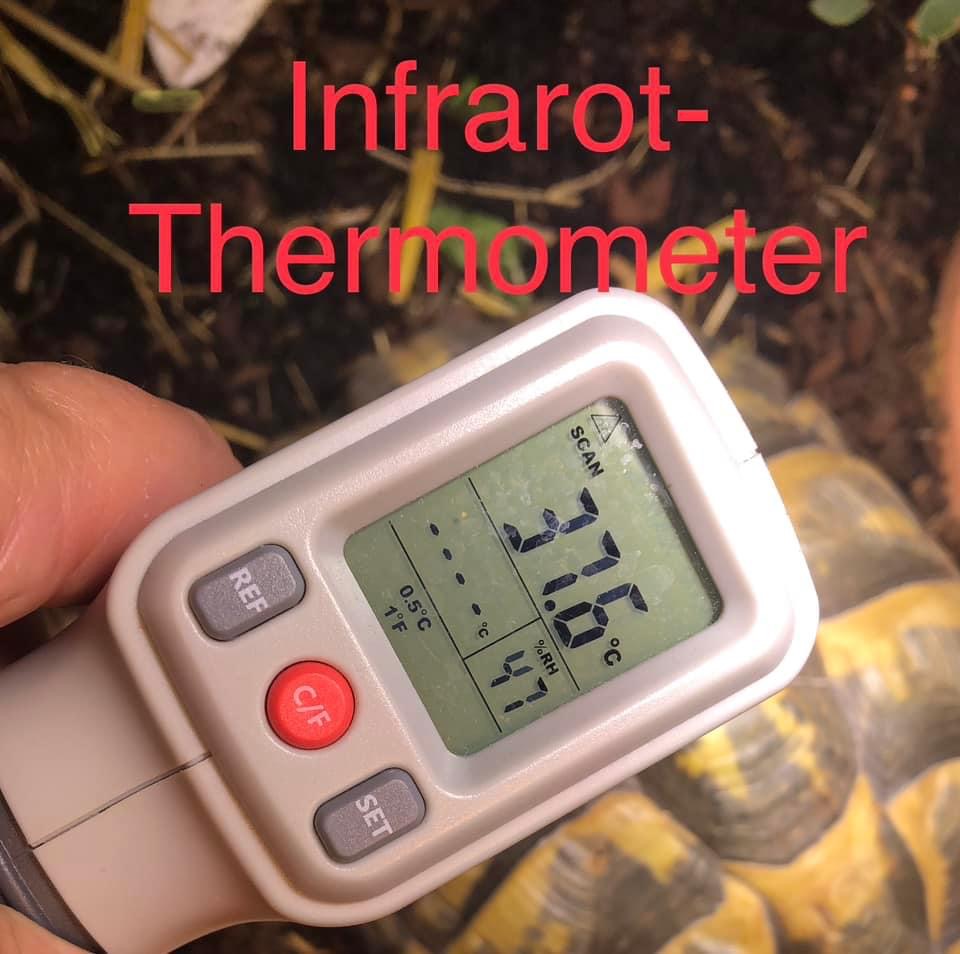
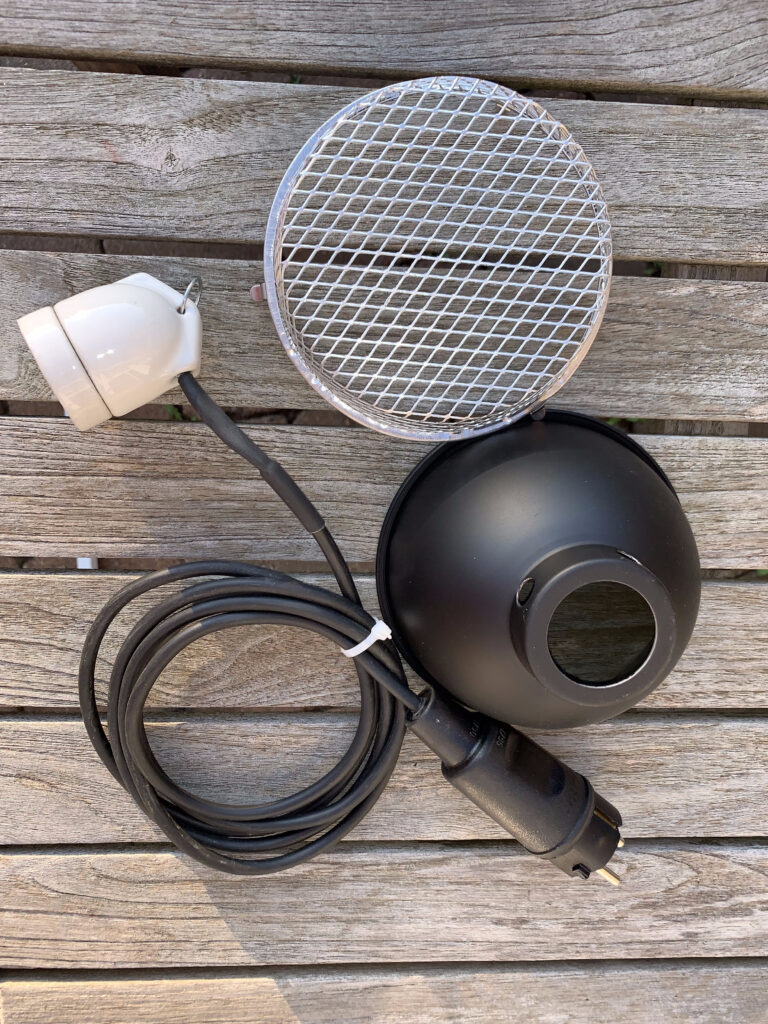
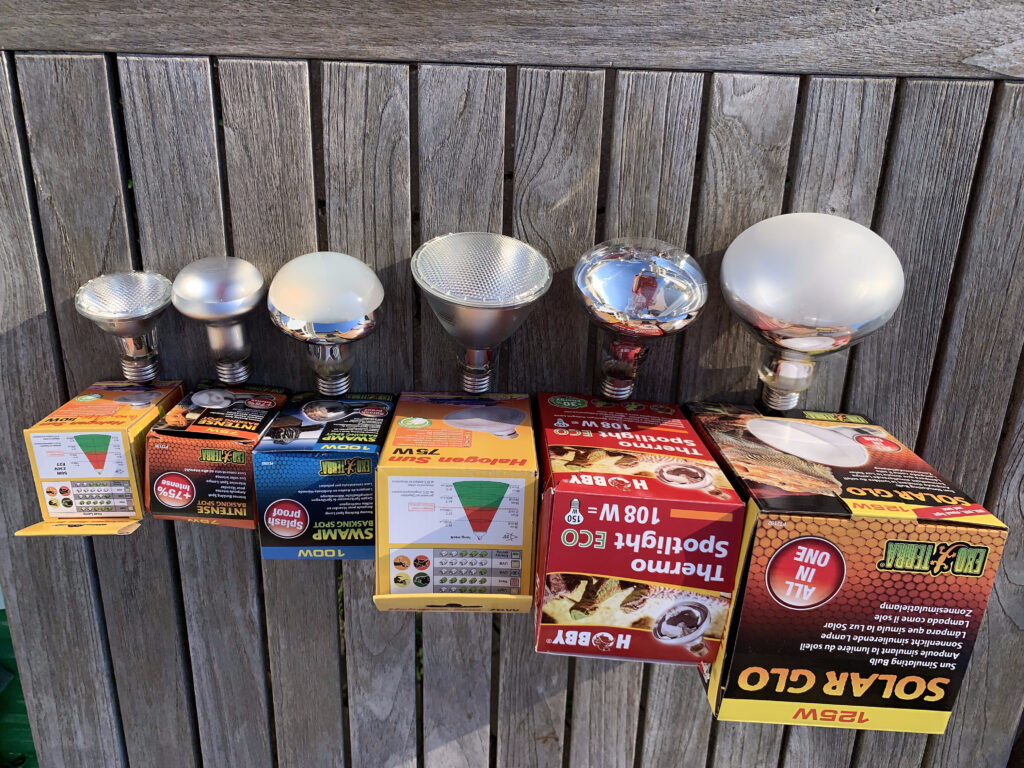
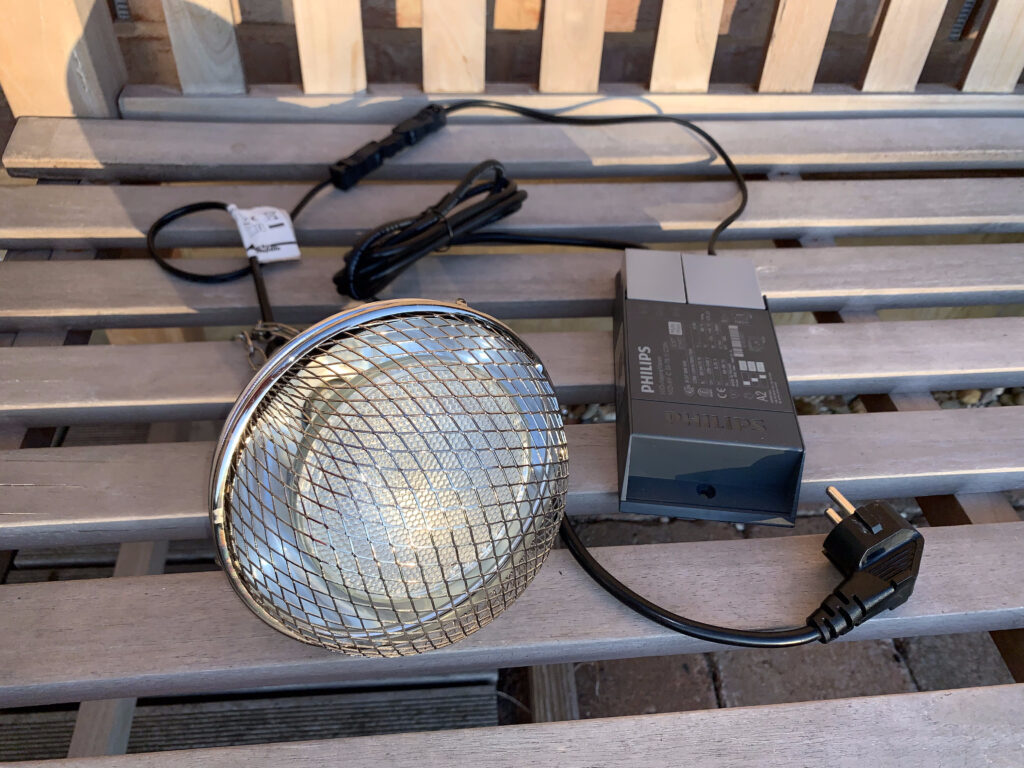
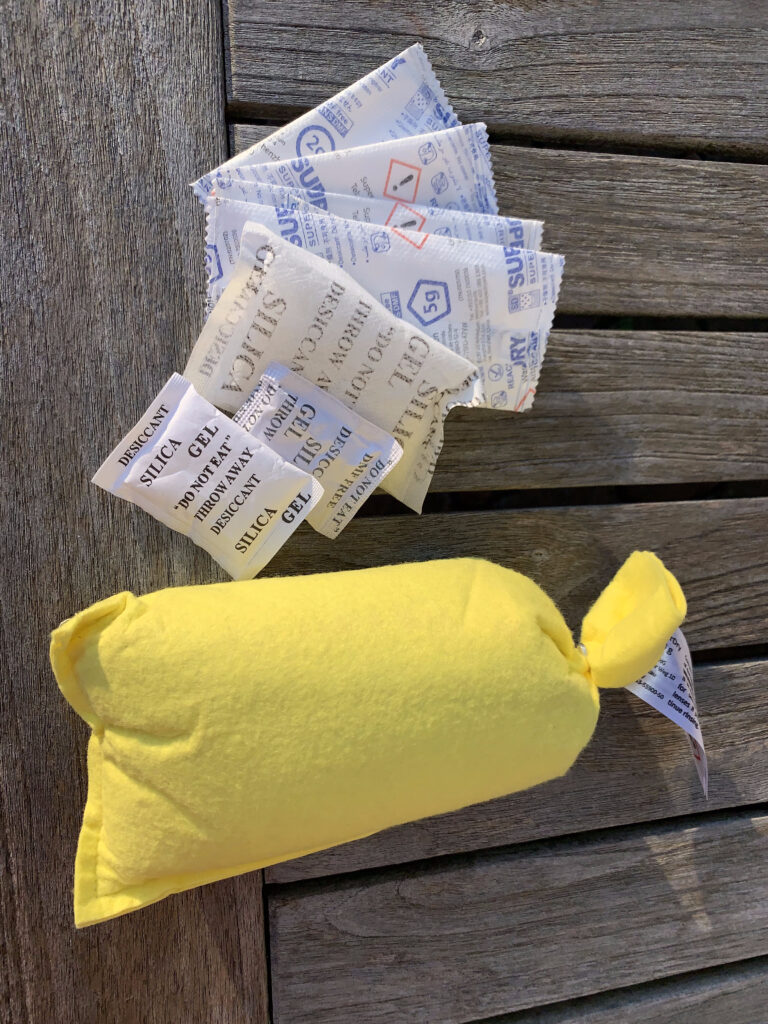
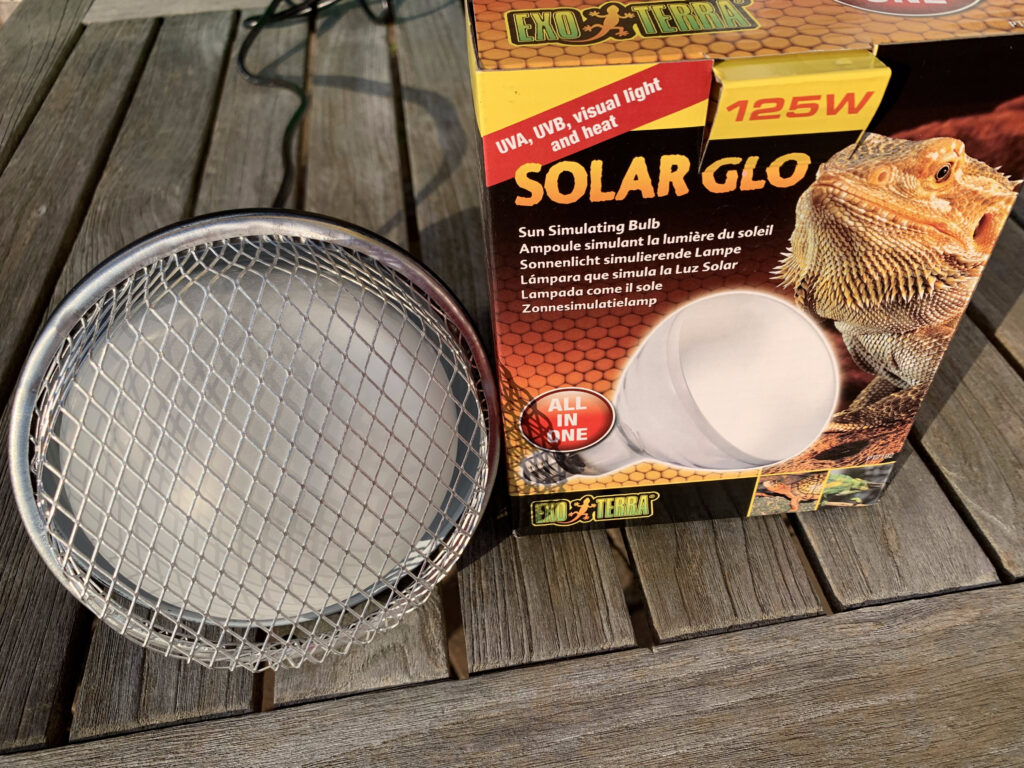
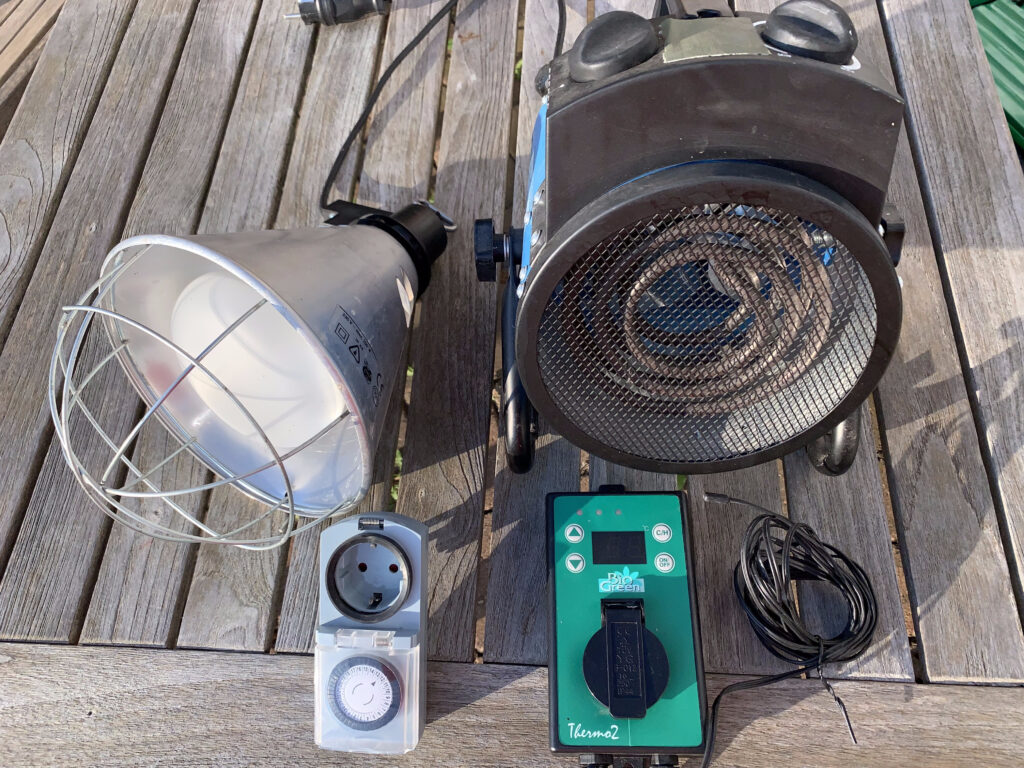
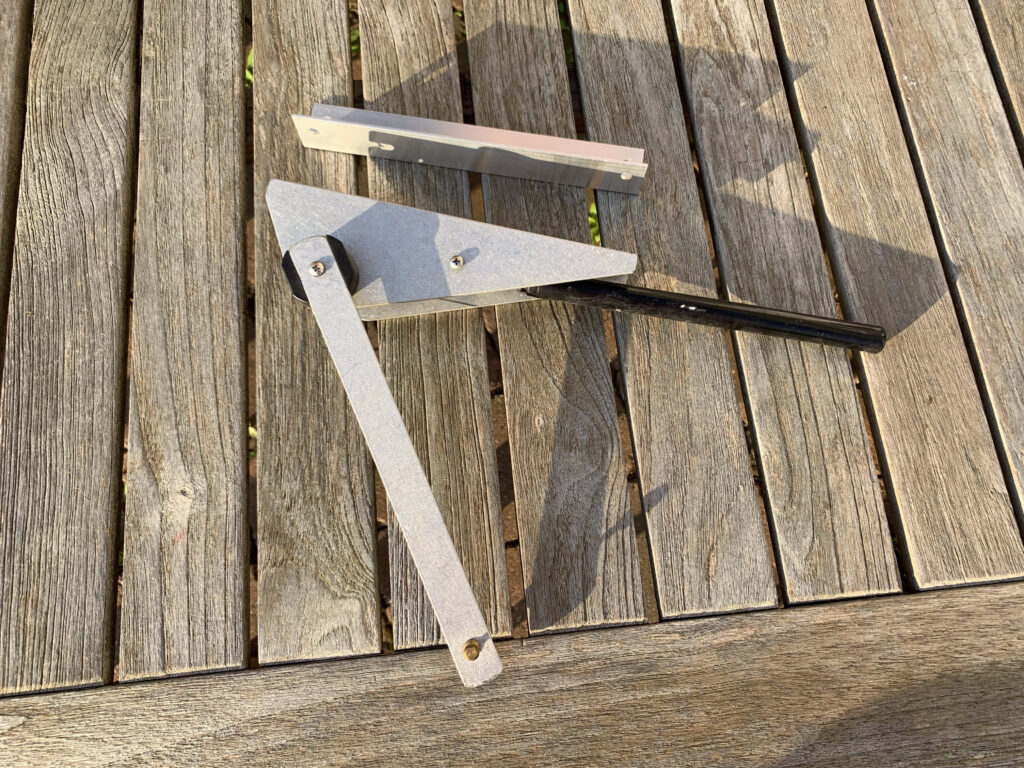
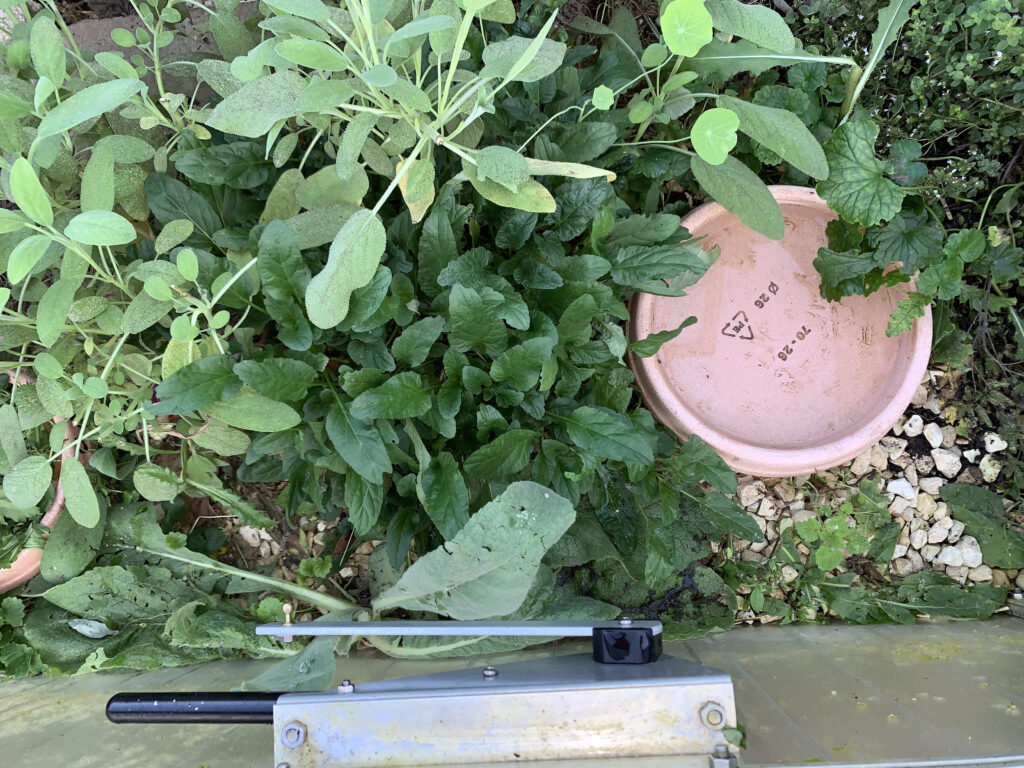
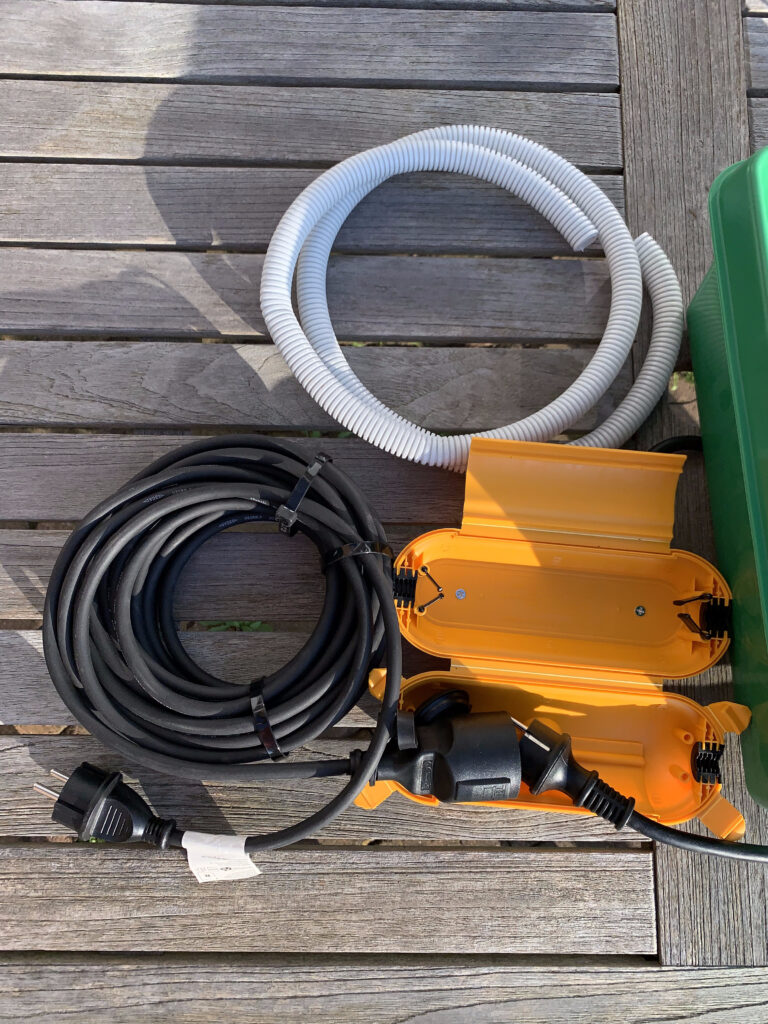
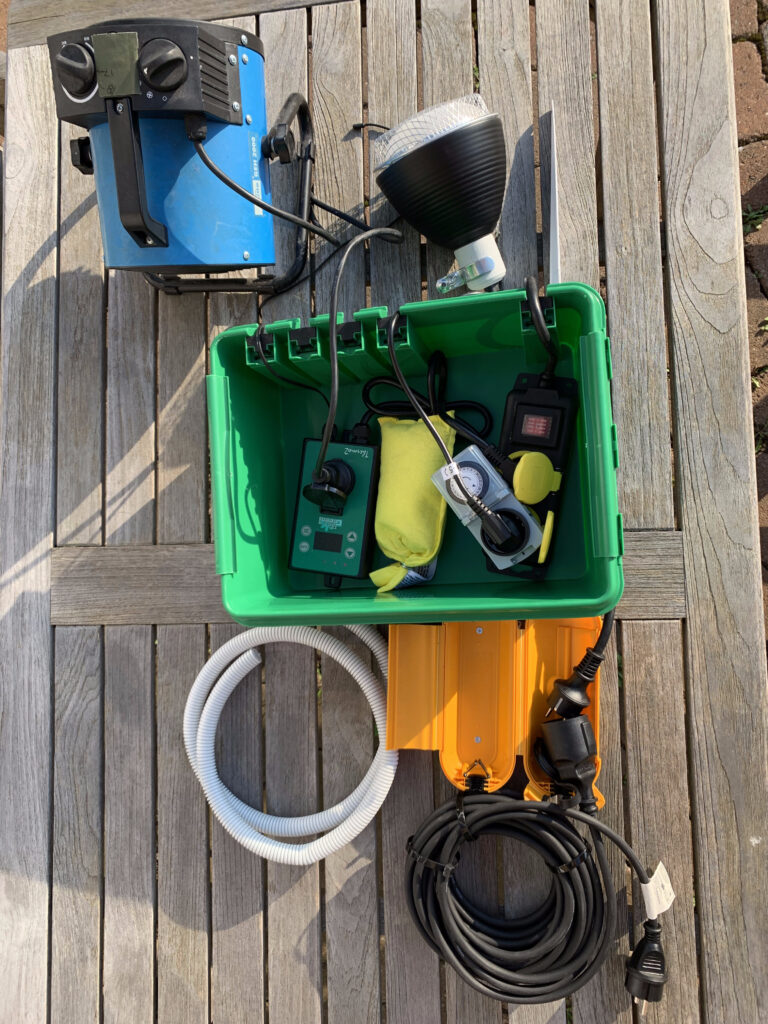
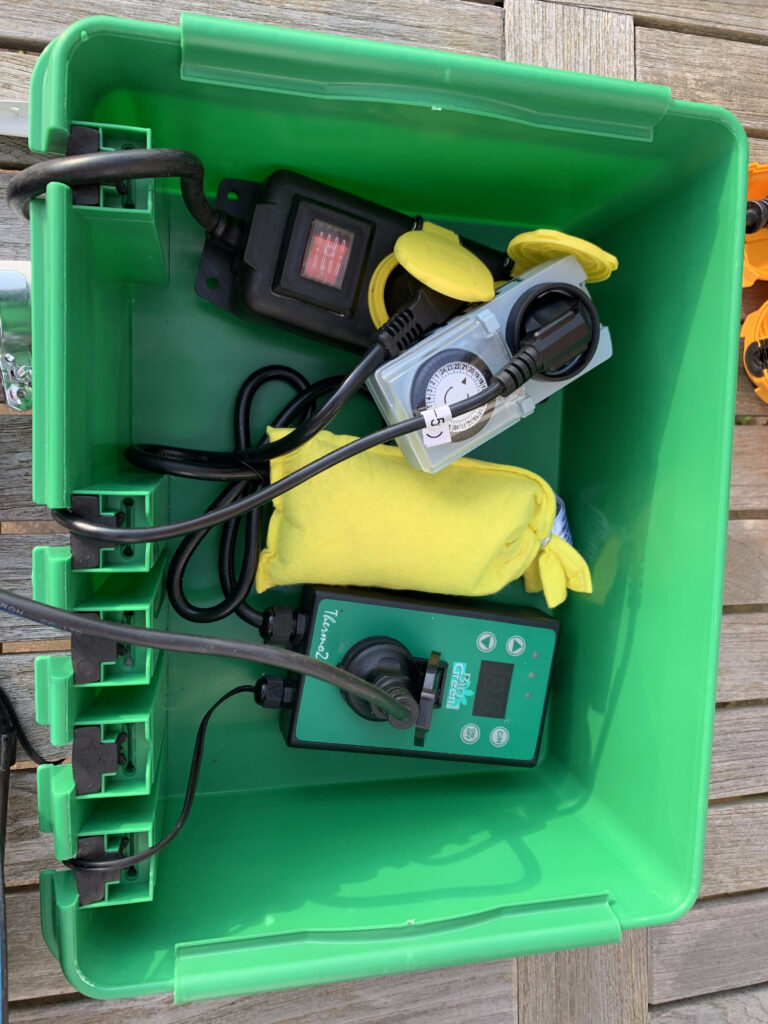
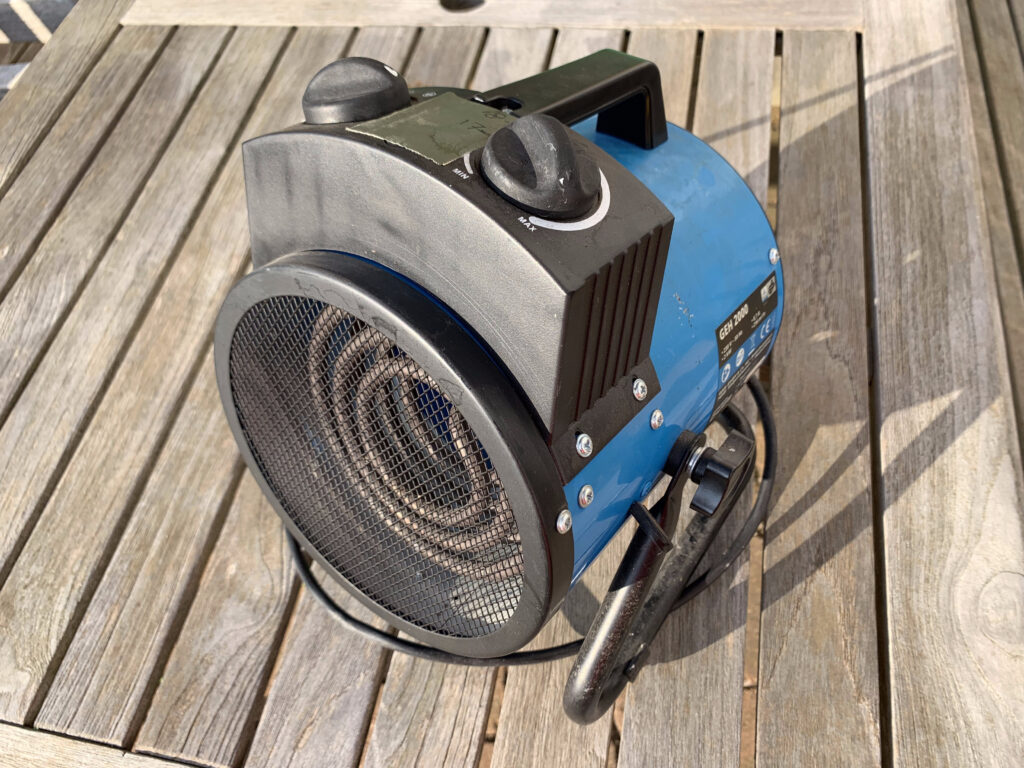
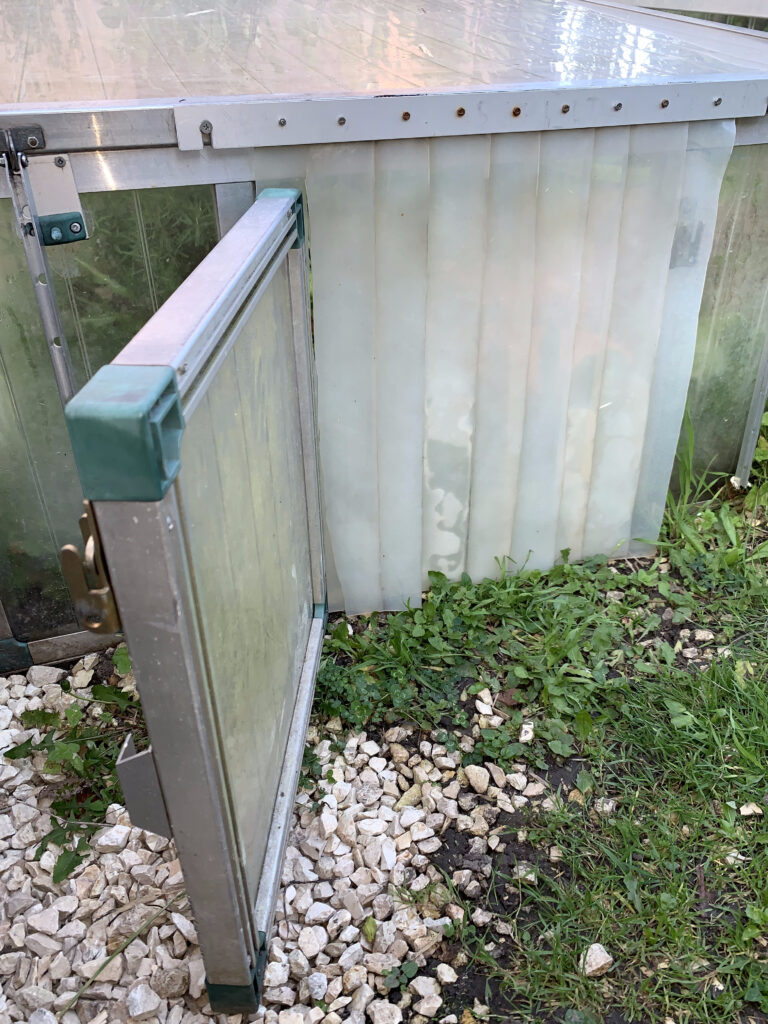
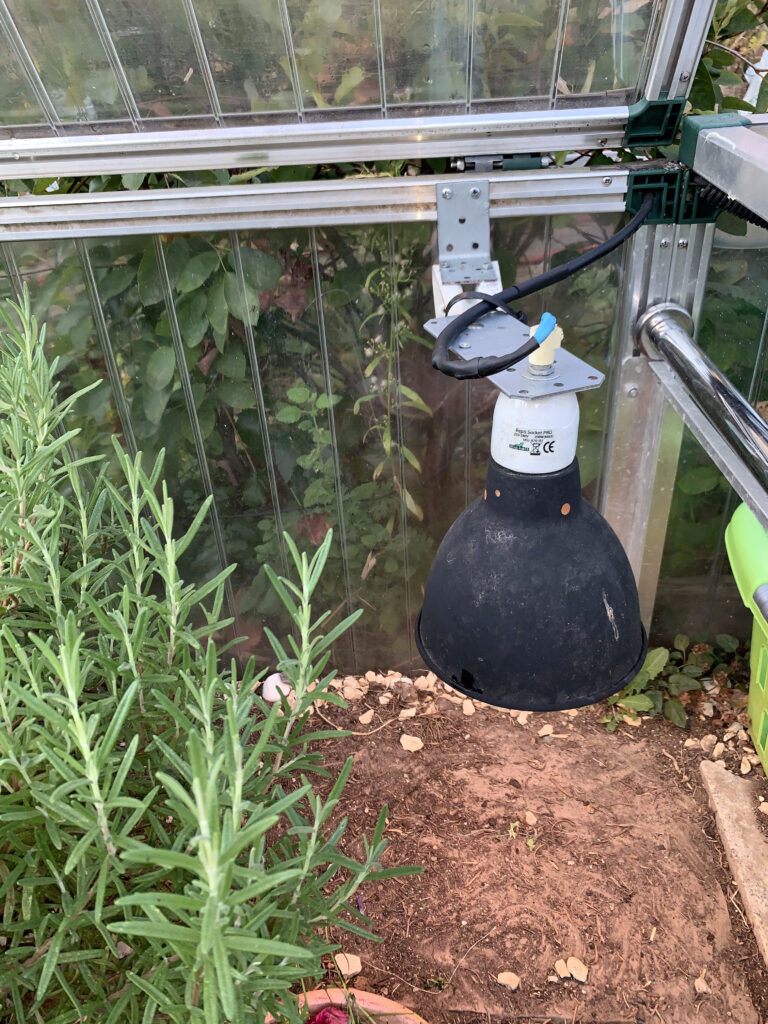
Keeping our tortoises warm
Why a cold frame with technology is essential for keeping European tortoises
Technology and a high-quality cold frame made of 16 mm twin-wall sheets are essential in our latitudes to keep our animals healthy into old age. If our protégés do not have the opportunity to bring themselves up to temperature, or if they spend the winter too cold, there is a risk of serious illnesses and metabolic disorders and even painful, slow death due to organ failure.
Some animals are kept completely incorrectly without an external heat source and in some cases even without a cold frame and have to endure terrible pain for decades due to organ damage and gout until they finally die. The fact that the animals survive for so many years is solely due to their high capacity for suffering. This is not proof that it is possible ‘without technology’.
My vet likes to say that ‘nobody would keep their tortoises cold if the animals could express their pain by crying’. This should really give any sceptic food for thought.
In this respect, it should not be forgotten that the animals could live up to 100 years if kept well.
Compared to their habitat, our climate is too cold and damp with too few hours of sunshine. It is important to create a ‘Mediterranean microclimate’ in the cold frame as well as possible. This is not possible without technology.
Technology also includes the area of protected overwintering.
This means creating an overwintering pit under the cold frame, protected from frost and predators, and never leaving the animals unprotected in the open. In the pit, the necessary technology (heating mats, fan heaters) is used to ensure the correct overwintering temperatures of no less than 4 degrees.
If this form of hibernation cannot be realised, they should be hibernated in a controlled manner in the refrigerator at 4.5 – 7 degrees.
Many people involved in turtle conservation work on a voluntary basis for the species-appropriate keeping of European tortoises. Unfortunately, many keepers are unaware of the basic need of these cold-blooded animals for warmth or dismiss it as ‘superfluous’.
However, we consider it essential to provide a sunny spot in the cold frame or greenhouse (warm, bright lamp under which 38 degrees can be reached at tank height) and a heater for the basic temperature (fan heater, Elstein radiator).
The whole thing is easily controlled via thermostats and timers.
Beginners who do not have the possibility of installing electricity in the cold frame are strongly advised against keeping them.
Species-appropriate keeping of European tortoises is not feasible without a cold frame and technology. It is not a cheap hobby, as every beginner should be aware, especially as energy costs will probably never fall again and a high-quality cold frame is an investment (especially in the health of the animals).
But if you do it right, you will be able to enjoy your animals for a lifetime.
Photo: A 16 mm Alltop cold frame, equipped with fan heater and basking area, animal from previous inappropriate husbandry
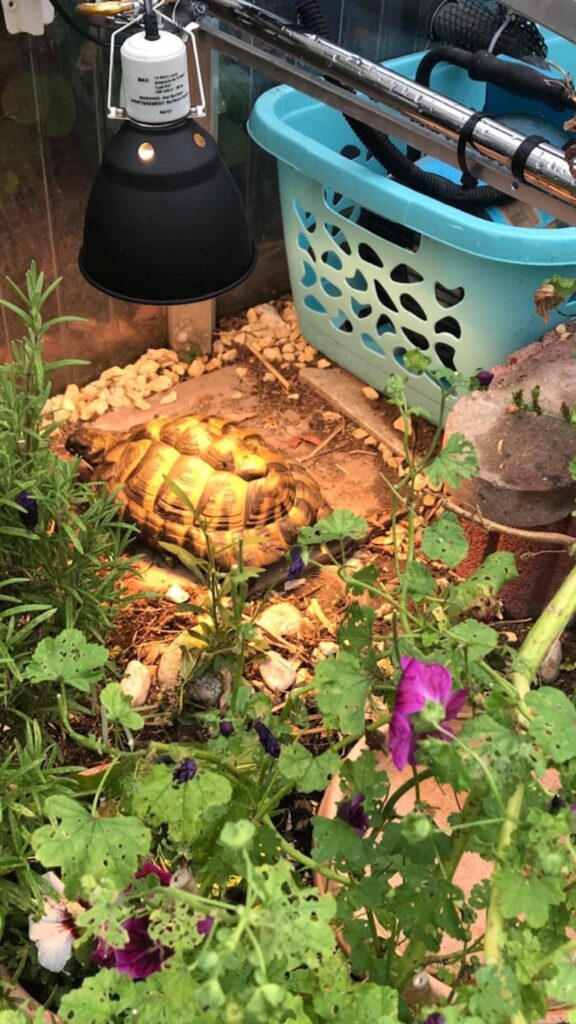
‘Building instructions’ hydroponic system for feeder plants
by Rita KLEIN
Materials required:
4 PVC pipes of any length, diameter 110 mm
2 beam feet
2 beams
8 pipe clamps
7 reducers, 110 mm x 50 mm, eccentric
4 double sockets
1 110 mm bend, 88 degrees
7 50 mm bends, 88 degrees
1 pipe 50 mm x 2 m
Lubricant
Large bucket
Aquarium pump
Tools required:
1 can drill
1 cordless screwdriver
8 mm drill bit
Knife
saw
In order to own a hydroponic system, I had to plan ahead and brought two sons into the world in good time (almost 30 years ago). I familiarised these two boys with various tools at the tender age of 2. Over the years, it turned out that the older one liked to misuse the tools or use them for his destructive plans. For example, he sawed off chair legs or drilled nice patterns into the table top. Today, he lives out this creativity in the emergency room. He saws off legs and drills nice patterns into human bodies.
The younger of my sons, on the other hand, soon developed into a skilled craftsman who enjoyed assembling things with the tools provided and became a real all-rounder over the years.
I described my wish to this son in many words and a few pictures from the Internet. I would have loved to make a photo documentation of the construction of the plant, but whenever I came near him, I was shooed away with the words ‘Go cook’ or ‘Get me a beer’. He was probably afraid of my support, which usually begins with the words ‘Couldn’t it be done like this?’ or ‘Shall I press there?’ and then soon ends in chaos. My hydroponic system was initially supposed to be in the greenhouse. That’s where my son set it up and because he was too lazy to hammer the feet of the beams into the ground, he just leant the system against the ground and wedged the beams so that the system couldn’t fall over. The bucket of water with the pump was placed next to it and the system was put into operation. After two days, I realised that the water in the system in the greenhouse was getting far too hot and the plants that were already in the system were being cooked. My son wanted to bury the bucket in the ground, which was a good idea, but the cats knocked over the system during the night, the water leaked out and the pump died for lack of water. In the next attempt, I asked my son to set up the hydroponic system in front of the greenhouse in the enclosure. As the power connection for the pump was now on the other side of the system, the hydroponic system had to be rotated and turned upside down, so to speak, so that the inclination of the pipes was correct again. The conversion went relatively quickly, I praised my shaken son excessively, told him he was my favourite child and gave him a good belly rub. Once the holes for the mesh baskets in the pipes, which had been drilled with a can drill and deburred with a knife, were pointing upwards again and the water level in all the pipes was perfect, I stocked the system with wild herbs pre-grown in tabs. The bucket with the new pump is half buried in the ground, the water doesn’t get too warm even when it’s 38 degrees outside. I have to top up the bucket with 5 litres of water every other day. But the plants are still very young. When they have grown, they will certainly need more water.
Rita Klein is the author of the turtle thriller ‘Die Buchstaben Tiere’ from kleintierverlag.de
